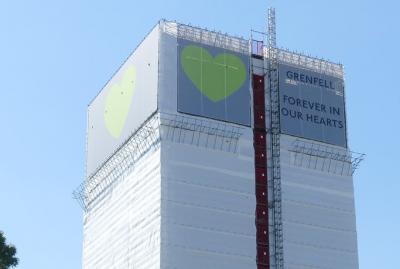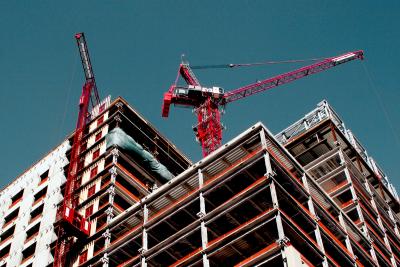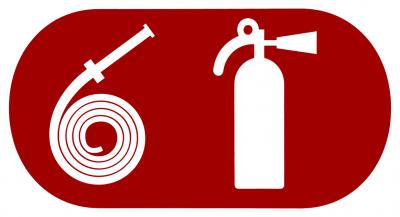Extra-statutory guidance and its role in relation to the Building Safety scandal - Part 1: Advice Notes
Guest author Liam Spender is a Solicitor-Advocate and Senior Associate at Velitor Law. Personally affected by the cladding controversy as a leaseholder, Liam practises in commercial litigation and arbitration in the City of London. The views in this blogpost are personal and not the views of Velitor Law.
Part 1: What are the Advice Notes and why are they necessary?
Posted:
Time to read:
Overview
It soon become clear following the Grenfell Tower fire that many other high-rise residential buildings with cladding were also at risk. The government’s response has been to seek to make buildings safe by issuing instructions to building owners through extra-statutory advice notes (the “Advice Notes”). Initially the Advice Notes applied only to buildings taller than 18 metres. The principles now apply to buildings of any height. This has both stalled the housing market and increased building insurance premiums.
The Advice Notes are retrospective, applying higher standards than those found in current Building Regulations for buildings below 18 metres. The Advice Notes have also undermined the system of building control approvals, with serious adverse consequences for the housing market.
This blogpost argues that the Advice Notes would have benefitted from the checks and balances that accompany statutory guidance or new legal powers for the government. Many of the consequences for leaseholders could have been avoided had the government adopted a different, evidence-based approach.
Part one of this two-part blogpost explores how the Advice Notes came about. The second part will explore the consequences for leaseholders.

Why were the Advice Notes necessary?
Various statutes contain provisions relating to building safety, some of which are delegated to local authorities and local Fire and Rescue Services (“FRS”). Under the Regulatory Reform (Fire Safety) Order 2005 (the “FSO”), local FRS are empowered to take enforcement action if there is a serious risk. Local authorities also have powers to deal with hazards to health posed by buildings under sections 76-83 Building Act 1984 (“BA 1984”) and under the Housing Health and Safety Rating System in the Housing Act 2004, which the government made clear at the end of 2018 applies to checking external walls for fire hazards, including combustible cladding.
The government’s main statutory power to intervene in building safety issues is contained in BA 1984. Section 1(1)(a) BA 1984 allows for regulations “securing the health, safety, welfare and convenience of persons in or about buildings and of others who may be affected by buildings or matters connected with buildings”. These regulations are known as the Building Regulations, last amended in December 2018. Section 6 BA 1984 supplements the Building Regulations with a power to issue statutory guidance, issued as Approved Documents which set out in detail how to meet the standards laid out in the Building Regulations. Approved Document B deals with fire safety requirements.
Intervention before the Advice Notes
Even before the first of the Advice Notes was issued, the government had used its executive powers to intervene.
On 18 June 2017, the government wrote to local authority and housing association chief executives asking for safety checks on tower blocks to be undertaken, with a specific request that samples were taken in order to identify ACM cladding. Further letters followed on 19 June 2017 and on 20 June 2017, the latter addressed to private building owners and asking them to check for ACM. The government also constituted an Independent Expert Advisory Panel, which met for the first time on 30 June 2017. This panel would take the lead in drafting the content of the Advice Notes. The government issued Advice Note 1 on 30 June 2017, followed by Advice Notes 2 to 13 between 30 June 2017 and 11 December 2017.
Advice Note 14
On 17 October 2018, the government issued the first of the Advice Notes considered in this blogpost, Advice Note 14 (“AN14”). AN14 required both public and private building owners to inspect their buildings for non-ACM cladding, particularly High Pressure Laminate (“HPL”) cladding. AN14 referred explicitly to buildings above 18 metres in height.
AN14 states that one of “the clearest ways of ensuring an external wall system adequately resists external fire spread are to use materials either of limited combustibility, or an external wall system which can be shown to have passed a large scale test conducted to the BS8414 standard.”
AN14 states further that “the expert panel's view is that for buildings over 18m, the clearest way to ensure they do not present a risk of fire spread is to confirm that materials are limited combustibility or better. Where the panels do not meet this classification, the most appropriate means of remediation is to remove and replace the panels, however professional advice should be sought first.”

Photo by Patrick Erickson from FreeImages
AN14 was the beginning of leaseholders’ difficulties. BA 1984 requires that a building is inspected for compliance with Building Regulations as it is planned and built, either by local authority Building Inspectors or by Approved Inspectors (private individuals licensed to carry out building control work). Once a building is completed, the inspector issues a completion certificate (in the case of a local authority) or a final certificate (in the case of an Approved Inspector) stating that the building complies with the requirements of the Building Regulations.
Regulation 17(4) of the Building Regulations provides that there is a rebuttable presumption that the issue of a completion certificate means that the building complied with the Building Regulations in force at the time of construction. Section 51 BA 1984 permits an Approved Inspector to issue a final certificate if he is satisfied that works have been conducted in accordance with the Building Regulations. Regulation 16 of the Building (Approved Inspectors etc) Regulations provides this certificate is final if not challenged by a local authority within 10 days of issue.
The existence of these building control approvals certificates is checked routinely as part of the conveyancing process when buying a flat.
AN14 contradicted these building control approvals by requiring a further examination of a building’s external walls. In particular, paragraph 6 of AN14 requires that the materials used in external walls are of limited combustability or would meet a BS8414 large scale test. That requirement is higher than the requirements of the Building Regulations and Approved Document B in force at the time. Unsurprisingly, many existing buildings were found not to meet these higher requirements and were therefore deemed to require expensive remediation works.
2018 Amended Building Regulations
With effect from 21 December 2018, the Building Regulations were amended to ban the use of combustible materials in the external walls of buildings 18 metres and above. Critically, the revised Building Regulations do not ban the use of combustible materials on the external walls of buildings under 18 metres tall.
The 18-metre distinction is important. As Dr. Jonathan Evans explains in his 10 December 2019 and 29 January 2020 blogposts, buildings below 18 metres are subject to less stringent regulations than buildings above 18 metres as to what may be incorporated in their external walls. This distinction was maintained in the revised Building Regulations effective from 21 December 2018.
As explained below, the Advice Notes recommend that building owners apply this ban to existing buildings of any height, thereby going beyond the requirements of the Building Regulations.
Advice Note 22
On 25 July 2019, the government issued Advice Note 22 (“AN22”). AN22 is addressed to “building owners of residential building of 18 m or more, although the principles may also apply to other building types.”
AN22 extends the scope of AN14 by noting that some forms of HPL, and insulation, are “very unlikely to adequately resist the spread of fire” and that building owners should then take action in line with AN14.

Photo by Richard McMillan from FreeImages
Form EWS-1
In response to AN14 and AN22, the Royal Institution of Chartered Surveyors developed Form EWS-1. EWS-1 enabled lenders to be satisfied that the external walls of buildings complied with AN14 and AN22, at least for valuation purposes. It allowed an appropriately qualified surveyor to inspect a building’s external wall and sign the certificate stating whether it complied with the Advice Notes. Lenders could then rely on the certificate in granting a mortgage.
Consolidated Advice Note January 2020
In January 2020, the government issued a Consolidated Advice Note. This note replaced AN14 and AN22. Paragraphs 1.5, 1.6 and 1.12 of this note made clear that the obligation to check, remove and replace cladding applies to buildings of any height.
The Consolidated Advice Note goes beyond Building Regulations requirements in relation to buildings under 18 metres tall, which still do not contain any outright ban on the use of non-combustible materials in their external walls (see Table 10.1 of Approved Document B, page 80 and paragraph 8 of the MHCLG Circular 2/18).
Conclusion
For nearly 40 years up to the issue of AN14 in October 2018, it was assumed that a building approved by building control met the requirements of the Building Regulations in force at the date of construction. The Advice Notes up-ended that view.
The Advice Notes were issued without any attempt to count the number of buildings affected. There was no cost-benefit analysis of the government’s recommended removal and replacement of cladding. The Advice Notes avoided Parliamentary scrutiny that would accompany a bill or a new statutory instrument. The Advice Notes imposed ministers’ preferred solution on all buildings without demonstrating that it was necessary or cost-effective in all cases.
The next part of this post looks at other fire safety guidance issued alongside the Advice Notes, and the consequences for leaseholders from both sets of guidance.
This blog was amended on 2 April 2021 to clarify the Advice Notes discussed by this blogpost, the effect of AN14 and the effect of the 2018 revised Building Regulations.
________
Share:
